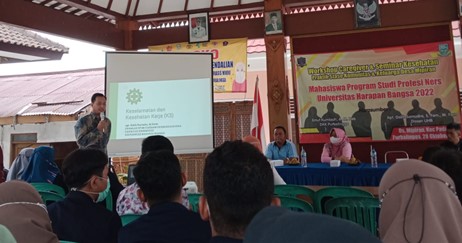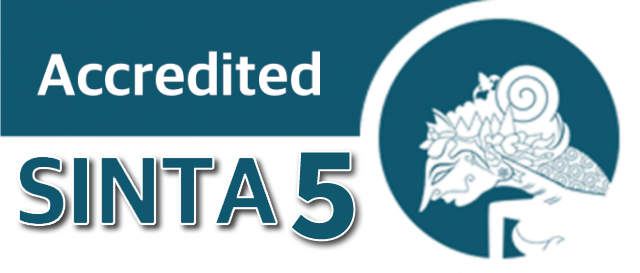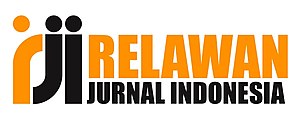Penyuluhan Kesehatan dan Keselamatan Kerja (K3) di Industri Sektor Purbalingga
DOI:
https://doi.org/10.35960/pimas.v1i4.1007Keywords:
K3, KAK, PAKAbstract
Occupational Health and Safety (K3) is an effort made to create a safe, comfortable working atmosphere with the aim of achieving the highest possible productivity. The implementation of K3,KAK,PAK is the responsibility of all related parties and is obliged to play an active role in accordance with their functions and authorities in carrying out various efforts in the field of K3 on an ongoing basis and making K3 a part of the work culture in every activity. Apart from K3, the public's knowledge about the dangers of fire is still common/insufficient even though the danger from fire can cause a lot of losses both material and moral and can also result in death. Knowledge of K3 can provide knowledge to the public so that they are more careful in taking actions that can cause a hazard such as fire. Knowledge of K3 can provide knowledge to the public so that they are more careful in taking actions that can cause a hazard such as fire. Based on these conditions, we, the Community Service Team at Harapan Bangsa University, Purwokerto, will provide counseling regarding K3 socialization in the Purbalingga eyelash industry sector
References
Djaali, N. A., Usman, S., Agustino, R., & Simaibang, F. H. (2020). Penerapan Kesehatan dan Keselamatan Kerja (K3) Melalui Sosialisasi Potensi Bahaya di Sekolah. Jurnal Pemberdayaan Komunitas MH Thamrin, 2(1), 34–43. https://doi.org/10.37012/jpkmht.v2i1.290
Emidiana, Nurdiana, N., Amin, M. S. Al, Azis, A., Kartika, I., F, Perawati, & Irwansi, Y. (2022). Penyuluhan K3 Listrik Bagi Pekerja Tahap IX RSUD Siti Fatimah Sumatera Selatan. Jurnal Pengabdian Kepada Masyarakat, 1, 2699–2706.
Kalalo, S. Y., Kaunang, W. P., & Kawatu, P. A. (2016). Hubungan antara pengetahuan dan sikap tentang K3 dengan kejadian kecelakaan kerja pada kelompok nelayan di Desa Belang Kecamatan Belang Kabupaten Minahasa Tenggara. PHARMACONJurnal Ilmiah Farmasi-UNSRAT, 5(1), 244–251.
https://ejournal.unsrat.ac.id/index.php/pharmacon/article/download/11254/10845
Notoatmodjo, S. (2003). Pendidikan dan Perilaku Kesehatan. PT. Rineka Cipta.
Rashid, N. M., Jonemaro, E. M. A., & Akbar, M. A. (2018). Implementasi Permainan Pemadam Kebakaran Menggunakan Teknologi Virtual Reality. Jurnal Pengembangan Teknologi Informasi Dan Ilmu Komputer, 2(12), 1–6.
Saefudin, T. H., Rosihan, R. I., Sumanto, & Wiryawanti, V. E. (2020). Sosialisasi K3 tentang Bahaya Kelistrikan dan Kebakaran pada Desa Kedung Pengawas, Babelan, Kab, Bekasi. Jurnal Sains Teknologi Dalam Pemberdayaan Masyarakat, 1(1), 45–50. https://doi.org/10.31599/jstpm.v1i1.161
Supriyanto, Syarifudin, & Ardi. (2018). Analisis Kebijakan Pencegahan Dan Pengendalian Kebakaran Hutan Dan Lahan Di Provinsi Jambi. Pembangunan Berkelanjutan, 1(1), 94–104.




.png)










